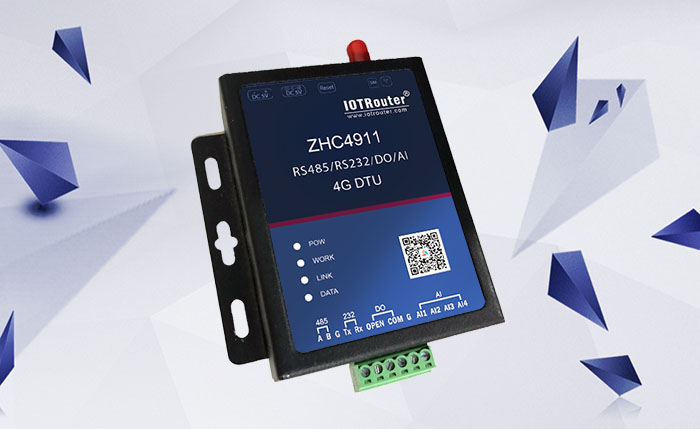What is DTU?
The DTU mentioned here is not the English abbreviation of Technical University of Denmark (Technical University of Denmark), but the abbreviation of Data Terminal Unit. Broadly speaking, when communicating, the module units responsible for sending data information at both ends of the data transmission link are called DTU. Its function is to perform format conversion and data sorting and verification of the transmitted information; in a narrow sense, DTU generally refers to the lower GPRS/CDMA transmitting terminal equipment in wireless communications.

The concept of DTU
DTU is a wireless terminal device specially used to convert serial port data into IP data or convert IP data into serial port data for transmission through a wireless communication network. It is widely used in meteorology, hydrology, water conservancy, geology and other industries.
What is the role of DTU?
DTU is mainly used for data wireless transmission. It is mainly through long-distance wireless data transmission, and the transmission objects are equipment and data centers or equipment. For example, the sensor that collects temperature is placed in a factory outside the city. Now the need is to see this data on the computer at home in the city. Then the data must be transmitted to the server, and then through the computer. accomplish. The process of transmitting data to the server is called data transmission, which is achieved through DTU.
How DTU works
Popular explanation: DTU connects to the terminal device through the interface to obtain data, and then wirelessly transmits it through the operator’s network (2G/3G/4G) to the designated data center or device. At the same time, the reverse data center can also send data or instructions to the DTU through the operator’s network, and then the DTU sends it to the terminal device through the interface.
Professional explanation: The communication between DTU and server is initiated by the GPRS DTU end (client), and the server end responds to the DTU end by sending feedback or accepting communication. The DTU side and the server side together form an application system based on GPRS and INTERNET network communication. Compared with the DTU side, the server side is installed with more complex applications, which can accept any communication request initiated by the DTU side and detect the communication status in the link at all times, thereby realizing real-time data collection, database services and other applications.
The DTU side needs to know the IP address and port number of the server side in advance before it can initiate a communication request. Once communication is established, there is no difference between the server side and the DTU side.
The IP address of the server can be either a public IP (fixed IP) or a dynamic domain name obtained through a domain name resolution server.
The port number of the server usually corresponds to the specific application running in the server, such as port number TCP 21 is used by the FTP service and TCP 80 is used by the hypertext server (Http). That is, the server-side application supports sending and receiving data through a specific port number.
The communication and protocol conversion process between the DTU side and the server side is shown in the diagram below:
Usually the IP address obtained by the DTU terminal is its intranet IP address randomly assigned by the GSM network operator. It can access the Internet through the mobile operator’s gateway. Special attention should be paid to the NAT (network) provided by the mobile GPRS gateway during system application. The address translation) port mapping service has a very short validity period, so if you need to maintain two-way communication, you must set up heartbeat packets sent regularly by GPRS-DTU to maintain NAT port mapping.
DTU product types
Classified by communication method, the communication methods generally used by DTU include GPRS/4G/NB-IoT/LoRa/WiFi, etc. Customers can choose the best communication method according to their own application scenarios; classified by interface type, DTU generally supports RS485, RS232, I/O and other interfaces, customers can choose the appropriate interface type according to the interface of their front-end collection device. In addition, there is an embedded DTU, which is functionally similar to a general-purpose DTU. The main difference is that it does not have a shell and is an embedded motherboard that customers can integrate into their own front-end acquisition equipment.
DTU application scenarios
DTU has been widely used in electric power, water conservancy, environmental protection, meteorology, transportation, logistics, industry and other fields. It has provided help for information and industrial integration in various industries and between various industries, and has gradually developed into a core technology for Internet of Things applications.
Expansion: DTU has different network types, including GPRS, 4G, NB-IOT, WIFI, LoRa, etc. Different network types are suitable for different application scenarios. For application scenarios where cost is required but delay is not required, GPRS DTU can be used. If power consumption is required, it is recommended to use NB-IOT DTU. If delay is required but power supply is not required, It is recommended to use 4G DTU. The last one is LoRa. If it is short-distance transmission, it is recommended to use LoRa DTU to save costs.